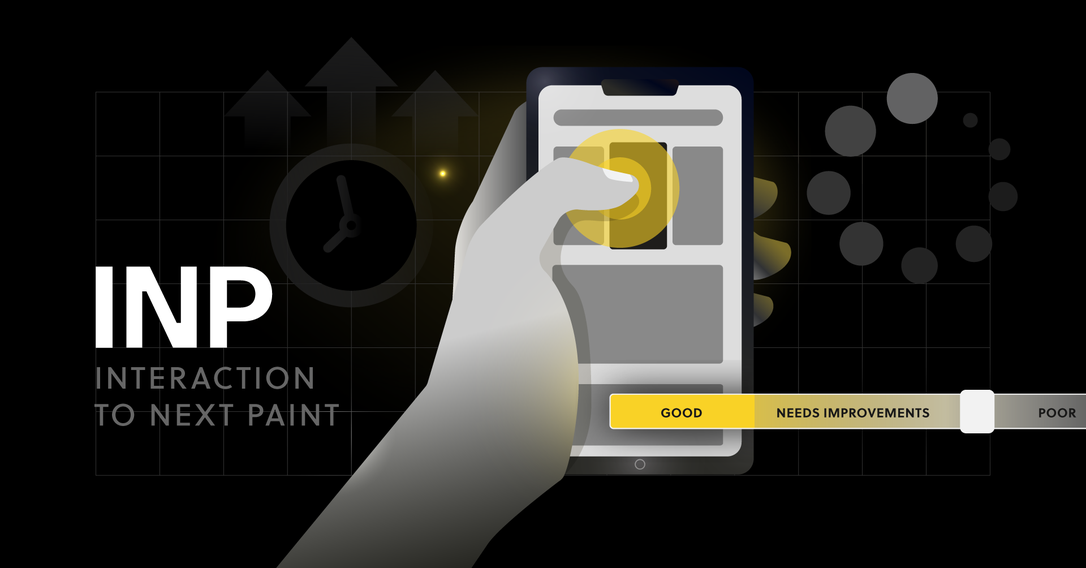7 min
October 21, 2025
Small vs. Large – Which Store Knows Its Customers Better?
I spent a long time thinking about what topic to tackle for my first article on InnPoland. Initially, I wanted to write a few words directed at the online marketing and analytics industry, but one issue, in particular, has been bothering me. It is the quality of knowledge that can be observed in the e-commerce sector, and how it translates into customer understanding. Such a seemingly trivial thing—awareness of the realities in which one conducts business. Moving beyond one's own product and getting to know the environment, the tools, and the possibilities that the Internet offers us.
Over the past year, I have been communicating very intensely with larger and smaller online stores. I personally conducted over 300 conversations with owners, and a few hundred more were thanks to my colleagues. Why were we doing this? Not to create reports or studies. We were guided by the desire to reach potential clients.
The Landscape of Polish E-commerce
I will ask a simple question now. Answer it silently. Which store, small or large, do you think knows its customers better? It's the small one, right? After all, it has a few, or a few dozen customers a month. Thus, it's easier for them to conduct direct communication with the customer. The owner often handles the service themselves and runs their store from A to Z, with only programming issues being outsourced.
On the opposite side of the fence, we have huge stores, managed by e-commerce big shots. They generate hundreds of thousands, sometimes millions of PLN in monthly revenue. They have 300 orders a day and customer bases exceeding one million records. It is not possible for them to know their buyers better than the small players. But wait... is that really the case?
Well, observing the market, I conclude that it is often the exact opposite. First, I would like to preempt the skeptics regarding what we should call an online store. Someone might say: "If I have Louis Vuitton handbags, 5 clients a month, I know each of them personally and we meet socially, you can't tell me that someone can know my client better than I do." Of course, it's hard to disagree with that person. However, can you call that an online store? In fact, they could not do that and only run mail-order sales by phone.
Let's focus on online stores then. Of course, I don't want to generalize in the examples I cite below. Interesting exceptions often occur, which I cannot mention due to confidentiality. I have compiled my observations in the form of several barriers that small stores struggle with.
Barrier #1 - Awareness
The first striking difference when talking to the owner or manager of large and small stores is the awareness of the environment in which they operate. Firstly, they need to understand how the internet, sales processes, and online advertising work. The internet is not just Facebook and Google. Utilizing the possibilities of the internet and technology requires an awareness of their existence. Secondly, they must be aware of the costs of running an online store. A good store cannot be "set up" for 1000 PLN, and advertising on the internet must, unfortunately, be entrusted to a specialist with a media budget larger than 100 PLN per month. At this point, it is not essential whether this knowledge and these skills are held by the owner, someone on the team, or outsourced. What matters is the awareness that without this knowledge, the company will have an extremely hard time succeeding on the internet.
Barrier #2 - Technology and Tools
It's hard to hide anything on the internet. People use the same email addresses on different services, log in through social networks, and use the same accounts on various devices. Few people realize what a gold mine of knowledge this is. It has also been known for a long time that you need tools to extract coal. You can dig with a small shovel or buy serious machinery for serious money. It's similar on the internet; to extract knowledge, we need a) the awareness that a deposit of it is hidden under our feet, b) the tools and technology to extract it, and c) the hands to do the work. What can be the result of this? Paradoxically, it is the larger stores that invest heavily in people and analytical tools that extract the essence of this knowledge. Thanks to this, they can afford to personalize all automatic communication based on what the user has just viewed or purchased. They will also offer a suggestion for a Children's Day gift, knowing that the user previously made purchase-related interactions in their store.
In that case, is it impossible to conduct effective activities on a small scale? Of course, you can! However, I am afraid that in this case, experience in working with professional tools may prove crucial. Thanks to it, we know how to extract certain information effectively, what works and what doesn't, and which tools are worth investing in in a specific situation.
Barrier #3 - "I don't want change, we're doing fine."
In Western culture, the customary answer to the question "How are you" is "Thank you, I'm fine." It is a certain form of greeting that in no way requires you to talk about whether things are actually good, nor does it expect such an answer. One could sum it up as: we leave our dirty laundry at home and outwardly express our concern for the other person. Polish entrepreneurs are somewhat similar. When asked if they are doing well in business, they will answer that everything is great. Any other answer could cast a shadow on their company. And everything in this matter would be understandable if it weren't for the fact that they often answer themselves this way. One of the most severe mistakes that can block a company's development, lead it to stagnation, or even drag it down, is the deeply rooted belief that change is not needed. They say: "Since something worked a year ago, it will work today." And kudos to those who build this opinion on a substantive assessment of their own actions and the market! Substantive is the keyword here. Having the opportunity, I appeal here to store owners, especially those with long-standing experience in traditional sales—open yourselves up to the new. The new is inevitable, and even if we reject it, it is at least worth knowing what it looks like.
Barrier #4 - Marketing Cost Analysis
I'm tempted to write an entire paper on this point. I'll try to do that in the next post. If you are already doing customer or transaction acquisition cost analyses, you can be happy. You are in the small group of people who do this at such a fundamental level. Online sales open up enormous opportunities for calculating revenues and costs at the customer level, the so-called User Economics. Thanks to this, you know how much you are effectively earning from a transaction or a customer during their period of interaction with your store. And essentially, this is the whole crux of the problem. In the vast majority of cases, people only include direct costs in the cost of acquiring revenue: the cost of buying the goods, the cost of the discount, the cost of online payment, and the cost of the intermediary's commission. Few people include the cost of online marketing here (search engines, price comparison websites, PR, SEO). Small stores, in particular, are unable to conduct such an analysis. I mention this because this knowledge directly affects the effectiveness of marketing and directs our efforts to where the effective margin is the largest. This allows us to discover the segments of users that matter the most for the good health of our store.
Barrier #5 - Sales Outside the Store
Sales outside the store are often a tempting proposition. Auction sites and sales platforms are great tools for reaching a wide audience. They can also significantly increase sales, especially for small stores that cannot afford their own broad marketing campaigns. However, initiatives of this type always have one drawback. It is the fact that the person who buys your product is not actually a user of your store; they are a user of the auction site or sales platform. The amount of customer information you can use is zero. Of course, there are a number of other channels that are also capable of presenting your store's products (e.g., affiliation, price comparison websites, discount platforms, coupons). There are also a few solutions on the market that draw from several of the above at once, e.g., shopconnector.pl.
Barrier #6 - Funds
Investment outlays for tools, personnel, and processes can clearly raise the level of experience we offer to clients. They also increase the amount of feedback we receive from the customer. I often hear from people I talk to that they only want to use free tools, and if they have to pay, they will have to abandon it. There is nothing strange about this; every entrepreneur, small or large, should analyze how the investment made will affect profit. A failed investment in a tool in a large store will certainly have a smaller impact on the company's overall condition than in the case of a sole proprietorship.
Let's sum up. In light of the above, does a small store have no chance of effectively competing with a large, well-funded rival? Who will be able to better describe their customers and select the most profitable ones? Personally, I believe nothing is impossible. I wholeheartedly recommend that every entrepreneur running a small store or traditional company starting their adventure online follow blogs and fan pages in the field of online marketing and e-commerce. You can often also use an external audit that will indicate areas that can be improved, often without investing even a single zloty in it.
The article was published on the portal https://innpoland.pl/
Docenili nas




